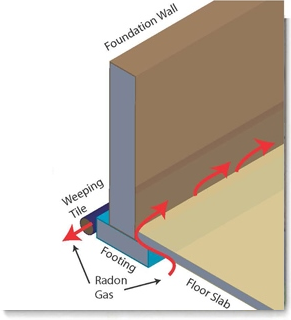Posted on March 2, 2017 by oi_admin - News

The uses for baking soda around the home are endless!
Everyone knows baking soda helps keep the inside of a fridge smelling fresh but did you know it’s also an amazing cleaner?
Here are a few other things you can use it for:
- A dry cleanser to clean tubs, tiles and toilets.
- Sprinkle on your carpet then vacuum after 15 minutes to eliminate bad smells.
- Pour a little down the sink followed by some vinegar to clear clogged drains.
Once you’ve finished cleaning your home, relaxing in the tub. Before you climb in though, add half a cup of baking soda to soften your skin!
Posted on March 2, 2017 by oi_admin - News

Making sure your heaters are working properly and operating efficiently can go a long way in keeping costs down. To help you do just that, here are 10 things you might not know about your baseboard heaters.
- Baseboard heaters are usually located under windows because it’s more efficient that way.
- Heat rises - and so do your energy costs, for every degree above 68°F.
- Cranking the thermostat doesn’t warm up the room any faster.
- Thick carpet or rugs can get in the way.
- Window coverings keep cool air out, but can block your heaters.
- If it’s dusty, it’s not working properly.
- Programmable thermostats are more precise than the manual ones.
- Pick sweet 16 (degrees) to maximize your savings. 16°C (61°F) save up to 10% on your energy bills.
- Baseboard heaters don’t circulate air well.
- They’re one of the safest heating options available since they can’t tip over.
Posted on March 1, 2017 by oi_admin - News

Radon is a colorless, odorless, tasteless, and chemically inert radioactive gas. It is formed by the natural radioactive decay of uranium in rock, soil, and water. It can be found throughout North America. Testing for it is the only way of telling how much is present.
The EPA offers examples of where radon can enter a building structure:

- Cracks in Solid Floors
- Construction Joints
- Cracks in Walls
- Gaps in Suspended Floors
- Gaps Around Service Pipes
- Cavities Inside Walls
- Water Supply
Posted on February 28, 2017 by oi_admin - News


Is your home safe? Studies show that burglaries occur at an average of every eight seconds, 400,000 serious residential fires happen every year, and more child deaths result from accidents than from all diseases combined.
Though we can never be completely safe at home, we can take certain steps to dramatically reduce hazards and the possibility of injury or tragedy.
- Make sure your home is fire-safe. Test every smoke detector in your house by pressing the test button. If it doesn’t sound an alert, replace the battery. Keep at least two fully charged, multipurpose fire extinguishers in your home: One in the kitchen area and one in the garage, located in clear view.
- Prevent carbon monoxide poisoning. The surest prevention is to have a professional technician inspect flues and vents, chimneys, and any fuel-burning equipment.
- Make your home more secure. A home security system can protect your house and family from burglary, carbon monoxide, and fire whether you’re home or away.
- Be prepared for emergencies. Develop an escape plan and practice with a family drill. Each room should have at least two exits.
- Make your home safe for children. If you have a swimming pool, pond or hot tub, be sure kids can’t get to it on their own. Never leave children unattended near pools or tubs.
Additionally, if you have small children in your home, check for poisons or objects that could be ingested, and eliminate the potential for falls.




 icon and select "Add to Home Screen".
icon and select "Add to Home Screen".
